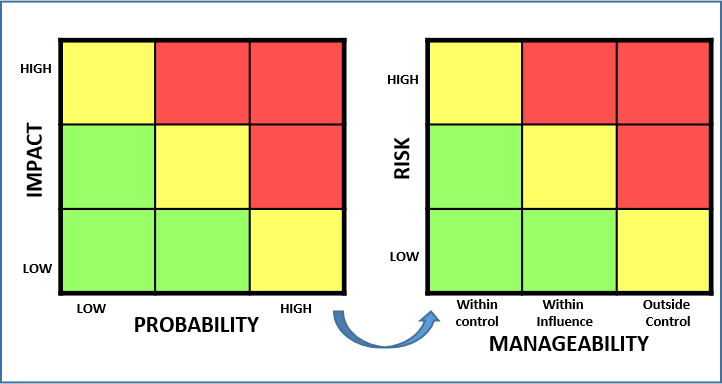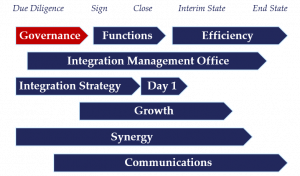

The structure of the integration needs to be agreed and put in place at the start, adequately resourced and maintained. Decisions need to be made in a timely manner. People need to know who to turn to when facing issues they cannot resolve.
Without good guidance, direction and decision making the planning will not go well and delivery will be poor and slow. We provide the support to ensure the structure, RACI process and controls are fit for purpose, communicated and managed.
How do we set up our integration structure? Who makes what decisions? Who runs the budget? Who is accountable for delivering the synergies? Who is responsible for changing the business? How will you know what is going on? How will you know if everything is going according to plan? When should governance be set up? How should workstream work? Where does each type of decision get made?
Do you understand the risks and mitigating actions of an integration?
Decision Making
Who can make decisions? Not as easy for people to understand before the organisational structure has been put in place from top to bottom and people changes made.
Who is responsible and accountable for what within the integration? from the HQ level, to functions, divisions and countries across all the current state organisations.
Where do budgets sit and who can sign off at each stage of the integration.
Understand the current governance structure, create an inventory of all decisions. To what extent are strategies and goals used as guidelines for decision-making? What are the decision rights and accountabilities assigned at the global, regional and local levels? Are decision-making processes well-defined, clearly understood and followed? Are decisions based on fact-based analysis and executed on a timely basis? Are decisions consistently communicated across the organisation?
Structure
Establish a governance structure, committees and other decision-making bodies. Assign appropriate decision rights at each level of the organisation (e.g. P&L ownership and control). Roll-out decision rights, what tools and data do people need to facilitate decisions.
Guidance
There are policies and guidance in place across both organisations at any one time. These are written, verbal and historic. Which policies are in affect at any one point in time? How does anyone know. Without a review of what is in place and explicitly saying what we want, we will get managers making it up as they go. We cant cover everything but we need to have principles in place across all functional and business areas
Structure
Integration is best managed by a Steering Committee that advises an Integration Management Office (IMO) that is responsible for planning and implementing the integration. The integration work is performed by each functional area (Human Resources, Finance, Operations, etc.).


The steering committee set strategic direction for Integration, define guiding principles, priorities & goals, sets the scope for transformation, sets expectations makes decisions and resolves conflict.
The workstream and BU leads, ensure project management standard, drive project delivery, delivery the objectives on time and on budget, communicate with and report status to IMO, prepare & maintain business plans, project timelines and manage risks & issues. They ensure communications, performance metrics are hit, and manage change control, scope control and resource requirements.
People
Knowledge and experience of the integration and functional areas, business area’s to enable good information collection, analysis and business cases to be pulled together for good and rapid decision making.
Risk Workshop
It is critical to understand the risks posed by the integration, business and the decisions we take. Having a risk workshop is a great idea, get all the risks out in the open and then have a plan to mitigate them. Tracking of the risks as we go through the deal can be done by the IMO and reported on. At timely intervals these should be updated with new risks that have popped up.
A number of risks have been identified, given the amount of work needed during deals (especially pre-deal), some or many of these are not catalogues, remembered, planed and resolved or mitigated correctly. It is often the case that issues that have been spotted or at least questioned, come back to bit us eventually. There is a large chunk of integration work associated with risk and their management




